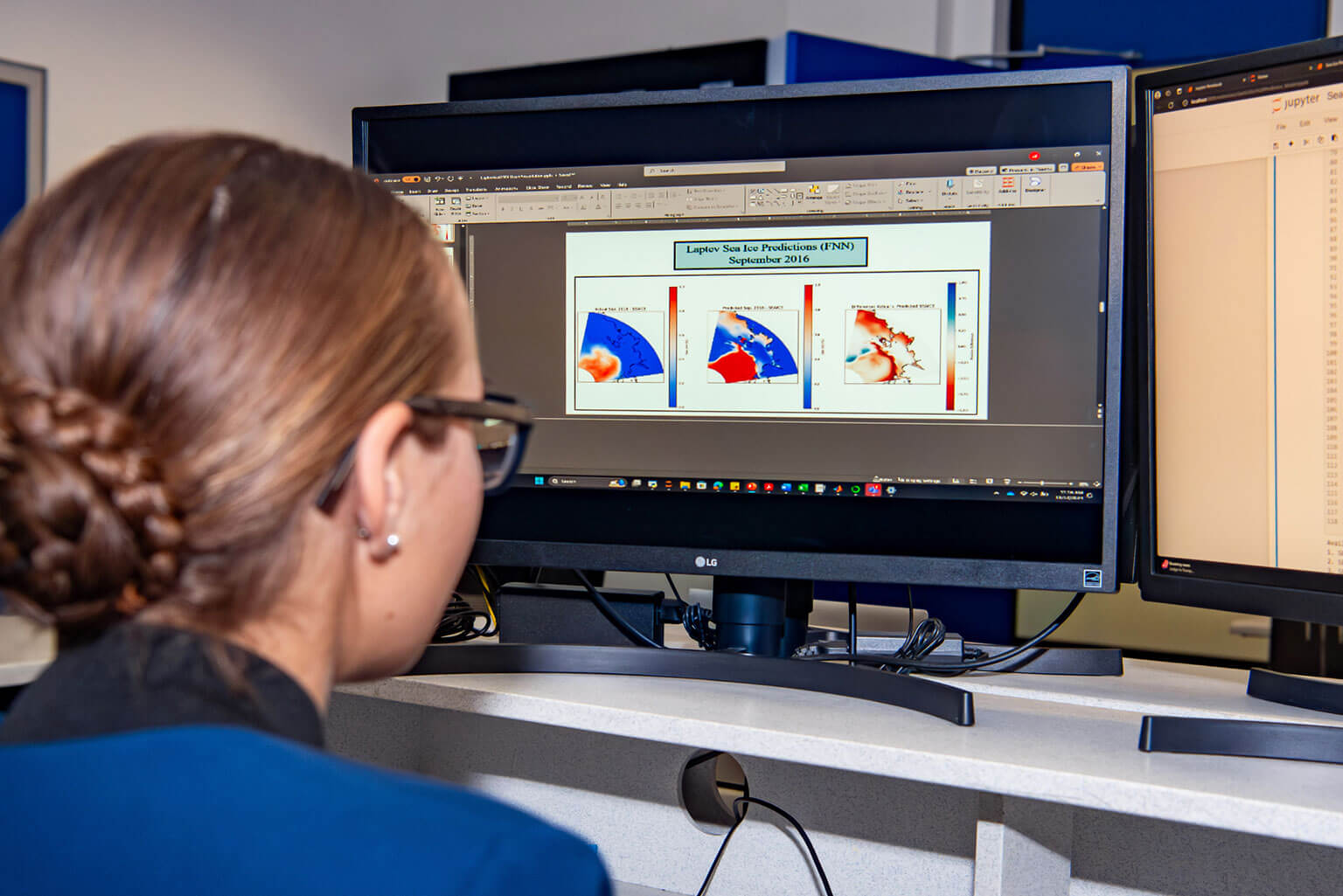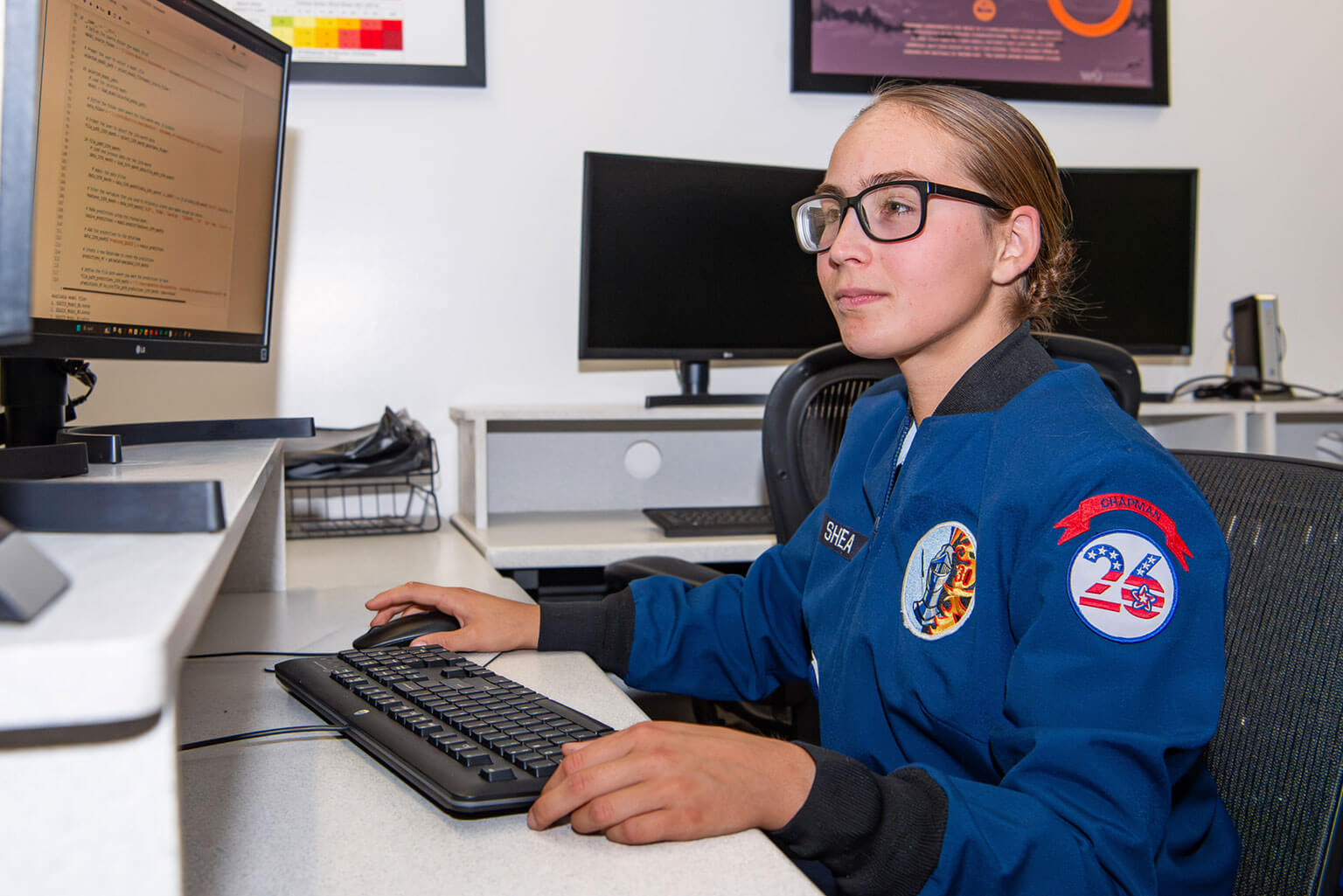Meteorology cadet research: sea ice forecasting

U.S. Air Force Academy Cadet 2nd Class Beatrice Shea compares machine-learning models in her sea ice forecasting research in the Meteorology Laboratory Nov. 12, 2024. Shea and Meteorology faculty developed a machine-learning model that could aid in accurate ice forecasts. (U.S. Air Force photo by Dylan Smith)
By Randy Roughton
U.S. Air Force Academy Strategic Communications
U.S. AIR FORCE ACADEMY, Colo. – Cadet 2nd Class Beatrice Shea’s fascination with the Arctic began long before she arrived at the U.S. Air Force Academy in the fall of 2022. Once Shea started her Meteorology core courses, she seized the opportunity to transform her interest in Earth’s northernmost region into a research project focused on using machine learning to forecast sea ice in the Arctic.
The strategic implications of sea ice research
According to the 2020 Department of the Air Force Arctic Strategy, the capability of accurate sea ice predictions in the Arctic could aid in ensuring a stable Arctic. Along with Meteorology faculty, Shea developed a model that applies machine learning to ice forecasting.
“The application of machine learning to sea ice prediction provides an alternative approach to a better understanding of annual sea ice variability,” Shea said. “I believe accomplishing this could reshape how machine learning is perceived and applied in the meteorology community.”
Machine learning is a computational subfield of artificial intelligence that enables a computer to learn to perform tasks by analyzing a large dataset without being explicitly programmed.

U.S. Air Force Senior Master Sgt. Nathaniel George points U.S. Air Force Academy Cadet 2nd Class Beatrice Shea’s attention to data in the machine-learning models in her sea ice forecasting research in the Meteorology Laboratory Nov. 12, 2024. Shea Meteorology faculty developed a machine-learning model that could aid in accurate ice forecasts. (U.S. Air Force photo by Dylan Smith)
Collaboration with department leadership
In September 2023, Shea wanted a research project that would allow her to develop her skills in machine learning through Python, a general-purpose programming language. After discussing her ideas with department leadership, Shea suggested the sea ice forecasting project to the Physics and Meteorology Department Head, Col. Rose Tseng. Tseng also inspired Shea to dive deeper into the region’s strategic significance.
The Department of Physics and Meteorology Superintendent Senior Master Sgt. Nathaniel George explained that the faculty’s primary role was to provide mentorship, resources, and guidance to support Shea throughout her research journey.
“From the beginning, Cadet Shea displayed a natural curiosity and excitement to explore the Arctic and forecasting challenges in the critically important region,” George said. “Seeing her take on such a challenging task, especially after completing just her first year at the Academy, is truly inspiring. Her curiosity and passion for learning show that she is ready to gain skills that will better prepare her for her Air Force officer career and help contribute to solving real-world problems.”
Shea hopes her dual majors in Meteorology and Applied Mathematics will help her graduate school application. She aims to continue her education in atmospheric electricity and enter the U.S. Air Force Weather and Environmental Science Officer career field after she graduates in 2026.
A data-driven approach: evaluating projections against reality
Shea conducted statistical analysis to identify the factors influencing sea ice concentration in the Arctic. She used various parameters such as 2-meter temperature, sea surface temperature, and pressure to train a deep learning model that determines sea ice extent forecasts. Her model determined sea ice for TIME using a sea ice data set from 2001-2016. Shea used 15 years of model data to train her deep learning models to generate a forecast, which she then compared with actual sea ice data.
During the fall semester of 2023, Shea developed a feed-forward neural network model. The following semester, she dove into convolutional neural network models, results of which she then compared to the feed-forward neural network model predictions. In January, she presented a poster on her research at the 104th-annual American Meteorological Society Student Conference in Baltimore MD.
Cadet Summer Research Program opportunities
Apart from her sea ice prediction project, Shea worked with Department of Energy’s Sandia National Laboratories on simultaneous lightning observation with geospatial orbit and ground-based sensors as part of her participation in the Cadet Summer Research Program. This coming summer, Shea will spend three weeks studying artificial intelligence and machine learning at the Oak Ridge National Laboratory in Tennessee.

U.S. Air Force Academy Cadet 2nd Class Beatrice Shea works on machine-learning models in her sea ice forecasting research in the Meteorology Laboratory Nov. 12, 2024. Shea and the Department of Physics and Meteorology developed a machine-learning model that could aid in accurate sea ice forecasts. (U.S. Air Force photo by Dylan Smith)
Shea hopes to return to the research during her last year as a cadet in the 2025-26 academic year to further improve her model. Her goal is to expand the research scope to the entire Arctic region.